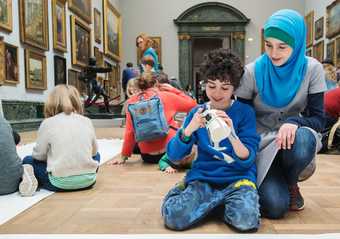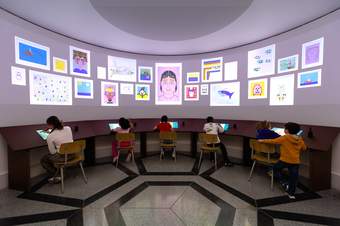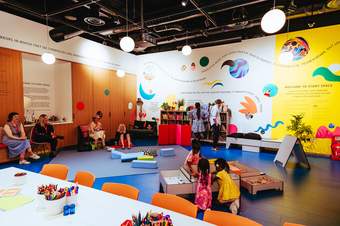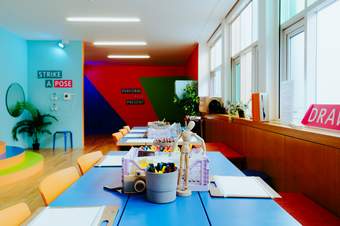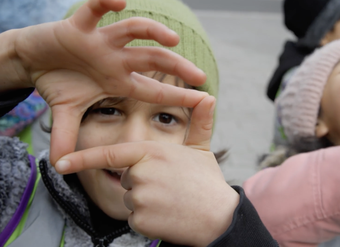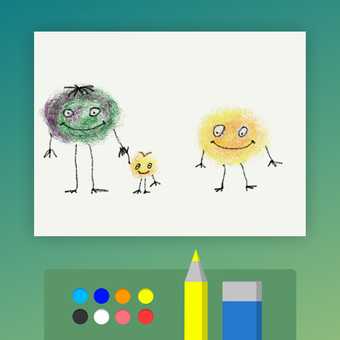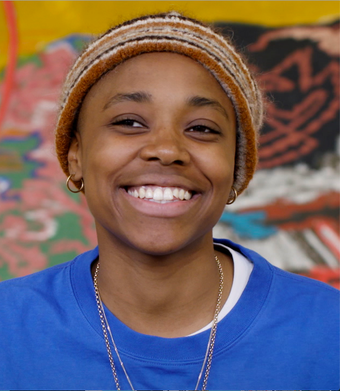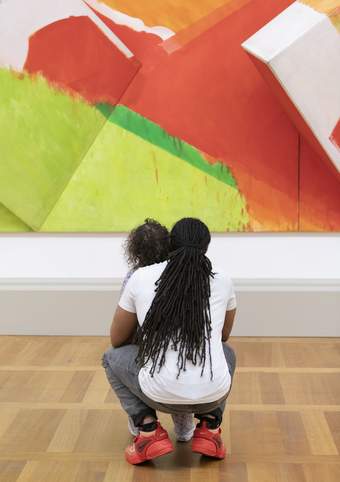
Photo © Tate (Jai Monaghan)
Where do we start?
When you visit Tate Britain you can learn about the story of British art from 500 years ago to the present. Have a go at finding these great artworks on your trip, and see what else you discover along the way. These are starting points to help you plan your visit as a family. Have fun and share your favourites with us on social media using #TateKids.
For more information about where to eat, drink and relax while you're here, read our top tips for visiting Tate Britain as a Family. Download our map [851 kb] to help find your way.
1. See double
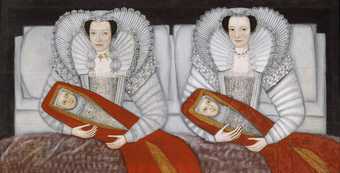
Unknown artist, Britain
The Cholmondeley Ladies
(c.1600–10)
Tate
Where is it? Historic and Modern British Art: Exiles and Dynasties: 1545–1640, Main Floor
This is a painting by an unknown artist, painted over 400 years ago. Look closely at the two women in the painting. They are sitting up in bed, fully dressed. When you first see the painting, you might think the pair of women and the pair of babies look the same.
What differences can you find between them? Look closely at their eyes, clothes and jewellery.
Do you think the Cholmondeley ladies were pleased with their portrait? Have a go at colouring them in.
2. Change the rules
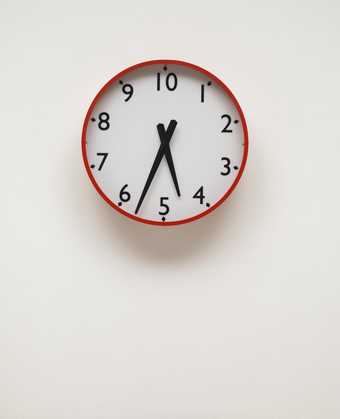
Ruth Ewan
We could have been anything that we wanted to be (red version)
(2011)
Tate
Where is it? Room 6, Main Floor Revolution and Reform
Take a good look around the room. What different types of artworks do you notice?
Look up. What’s different about the large, wall-hung clock displayed high up above one of the entrances to the space?
Ruth Ewan is an artist interested in revolution and radical ideas (especially those that have been overlooked or forgotten).
Ewan changed this clock to have ten hours instead of twelve, and each hour into 100 minutes, each minute into 100 seconds. Ewan is making reference to an attempt by the newly reformed Republic of France in the 1790s to change the way time was measured following the overthrow of the French monarchy.
Does this artwork make you think differently about time, or about power and control?
See the timeline on the wall for more information about the French Revolution or read more about the work.
3. Look for illusions
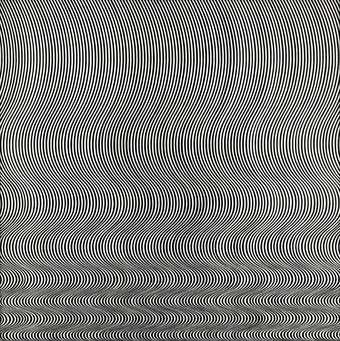
Where is it? Room 19, Main Floor, Modern and Contemporary British Art: In Full Colour
Look at this black and white artwork for as long as you can. How does it differ from other artwork you’ve looked at today? What does the title mean to you?
Bridget Riley was interested in the visual sensation of looking, and the potential of optical effects, which became known as ‘op art’. In Fall, she repeated a single curving line to create varying optical frequencies.
Experiment with line and colour – can you create any optical effects of your own?
4. Take a seat
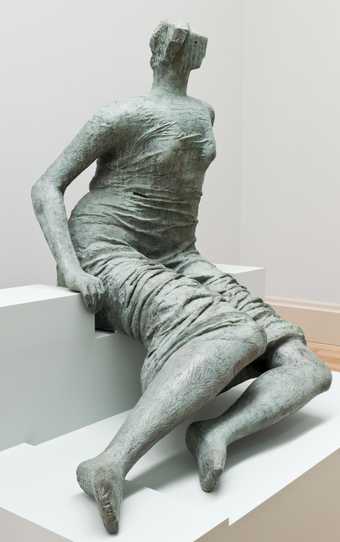
Henry Moore OM, CH
Draped Seated Woman
(1957–8, cast c.1958–63)
Lent from a private collection 1989
© The Henry Moore Foundation. All Rights Reserved. Private collection
Where is it? Room 23, Main Floor, Modern and Contemporary British Art: Francis Bacon and Henry Moore
Walk right around this sculpture, look through any gaps and find out how it looks from different angles, far away and up close. What do you notice?
Stand back and take a good look. How would you describe this person? Can you imagine where they might be sitting and what they're looking at?
There are copies of this sculpture in public spaces in East London and Wuppertal, Germany. Do you think sculptures like these should be outside, or are they better off being looked after in galleries like Tate Britain?
5. Tell your story
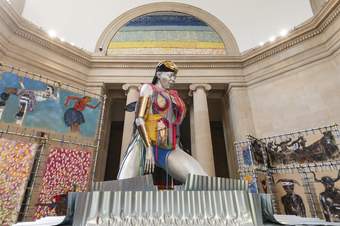
Tate Britain Commission: Alvaro Barrington: GRACE. Photo © Tate (Seraphina Neville)
Where is it? Visit Duveen Galleries, Main Floor, Alvaro Barrington: Grace
Take a walk through this epic installation of three parts, honoring the artist's mother, sister and grandmother. Who are the people who have shaped your life so far?
Alvaro Barrington uses personal memories across time and place in his artwork, from his grandmother's Caribbean home where a thunderstorm hammers on the corrugated tin roof, to the exhilarating energy of Carnival.
How could you represent the story of you and your family’s life through sound, imagery or material? If your story had a soundtrack, what would it be?

